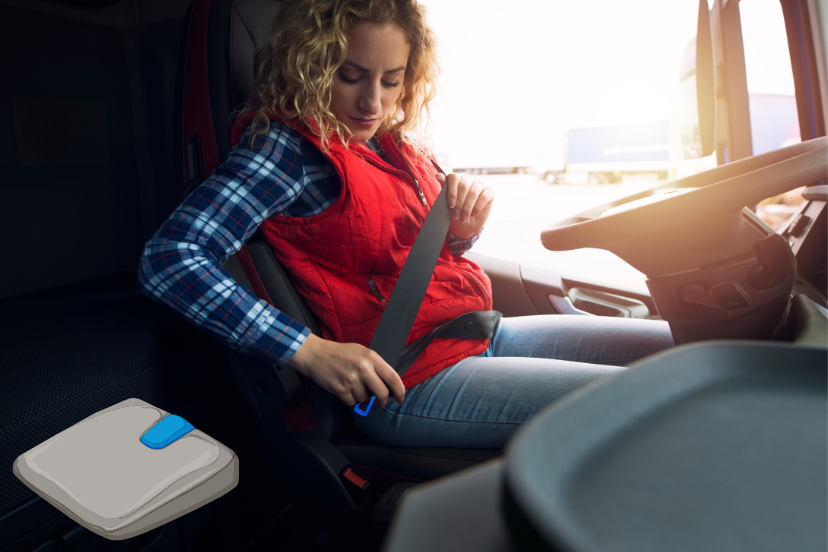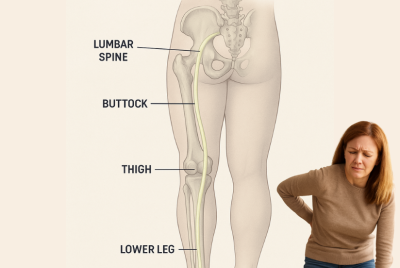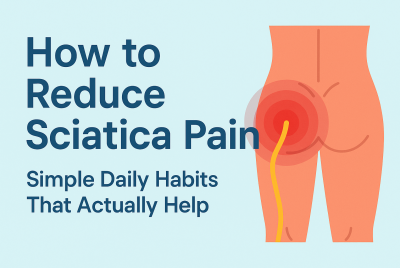Car Seat Cushion for Sciatica
A Guide to Comfort and Relief on the Road
Discover how a car seat cushion for sciatica can ease your pain on the road. Learn key features, types, and tips to drive comfortably again! When you suffer from sciatica, even a short car ride can quickly become uncomfortable. A car seat cushion specifically designed for sciatica can be a game-changer. In this guide, I’ll walk you through everything you need to know about choosing, using, and maintaining a cushion that will make your travels more comfortable. Let’s dive in!
Understanding Sciatica and Why Car Rides Can Be Painful
What Is Sciatica?
Sciatica is a condition where the sciatic nerve — the longest nerve in the body, running from your lower back down each leg — gets compressed or irritated. This can result in sharp, shooting pain, numbness, or a tingling sensation down one side of the body.
How Long Car Rides Aggravate Sciatica Pain
Sitting for extended periods, especially in a car, places pressure on the lower back and sciatic nerve. Unlike a comfortable chair at home, car seats often don’t provide the ideal support for your spine, which can worsen sciatica symptoms over time.
Best Car Seat Position For Lower Back, Neck Pain, or Sciatica
Why a Car Seat Cushion Is Essential for Sciatica Sufferers
The Role of Support and Alignment in Pain Relief
The right car seat cushion can reduce pressure on the sciatic nerve by promoting proper spinal alignment. With the right support, you’ll avoid the slumping posture that often aggravates sciatica.
Benefits of a Sciatica-Friendly Cushion for Long Drives
A well-designed car seat cushion can turn an uncomfortable drive into a more manageable one. Not only does it relieve pressure, but it also absorbs the impact of road bumps, which can otherwise send painful shocks up your spine.
Key Features to Look for in a Car Seat Cushion for Sciatica Relief
Memory Foam for Comfort and Durability
Memory foam cushions adapt to your body shape, providing a custom fit and ensuring support that lasts through long drives. They’re also known for their durability, so you won’t have to replace them frequently.
Ergonomic Design for Proper Posture
An ergonomically designed cushion encourages your spine to remain aligned. This reduces strain on the lower back and hips, helping to prevent flare-ups of sciatic pain.
Tailbone Cutout for Pressure Relief
Many sciatica-friendly cushions have a cutout at the back to reduce pressure on the tailbone, which is crucial if you also suffer from lower back or hip pain.
Anti-Slip Base for Stability
Look for a cushion with an anti-slip base to avoid shifting while driving. This feature helps you feel secure and steady, no matter the terrain.
Types of Car Seat Cushions Suitable for Sciatica Relief
Wedge-Shaped Cushions
Wedge-shaped cushions are thicker at one end and taper down, promoting a slight forward tilt that keeps the pelvis aligned with the spine.
Advantages of a Wedge Design
This tilt can reduce lower back pressure, which is beneficial for sciatic pain relief, and it also gives a small boost in seat height, improving visibility.
Gel Cushions
Gel cushions are particularly good for people who get overheated or live in warmer climates. They provide a cooling effect that can be soothing during long trips.
Cooling Effect and Pain Reduction
Gel material disperses heat, helping to keep the cushion cool and comfortable, which can reduce pain caused by increased body temperature.
Inflatable Cushions for Customizable Support
Inflatable cushions let you control the firmness, allowing you to make adjustments based on your comfort level. They’re also easy to store and travel with.
How to Properly Use a Car Seat Cushion for Maximum Relief
Positioning the Cushion Correctly
Place the cushion so that your hips are well-supported and your spine remains straight. Avoid placing it too far forward or back, as this can throw off your posture.
Adjusting Car Seat Settings to Enhance Comfort
Use the car’s seat adjustments to complement your cushion. Raising or lowering the seat slightly and adjusting the recline angle can help to reduce pressure on your sciatic nerve.
✅ What to Look for in a Good Car Seat Cushion for Sciatica
-
Proper Contouring & Ergonomic Shape
-
Look for a cushion that is contoured to support the ischial tuberosities (sitting bones) and reduce pressure on the tailbone (coccyx).
-
Some cushions have a cut-out (U-shaped) or central recess to reduce direct pressure on the nerve.
-
The cushion shape should encourage your pelvis to tilt slightly forward rather than slouch back.
-
-
Firm But Responsive Material
-
Medium to high-density memory foam or hybrid foam/gel works well: it gives support without bottoming out.
-
Gel-infused options can help with heat management.
-
Avoid cushions that are too soft (you’ll sink in and lose support) or too rigid (they might feel uncomfortable).
-
Many reviews of sciatica cushions stress how memory foam conforms to body shape and helps distribute pressure more evenly.
-
-
Wedge or Height Adjustment (if needed)
-
If your hips are lower than your knees when seated, a slight wedge (raising the rear of the cushion) can help improve spinal alignment.
-
But be cautious: too much wedge can shift pressure in unwanted ways. Test gradually.
-
-
Non-Slip Base / Secure Straps
-
The cushion shouldn’t slide under you each time you move. Look for rubberized bottoms or anti-slip grips.
-
Straps that clip or fasten to the seat help keep the cushion in place.
-
-
Breathability & Cover Material
-
Long drives can make you sweat — breathable or mesh covers help with ventilation.
-
A removable, washable cover is a plus for hygiene and maintenance.
-
Some manufacturers use materials designed to stay cool.
-
-
Portability & Fit
-
If you change vehicles often, a lighter or compact cushion is more practical.
-
Make sure the size matches your car seat — too large, and it may push you forward; too small, and you lose support.
-
-
Trial Period / Return Policy
-
Because everyone’s body and pain pattern is different, it’s great if the seller offers a trial period or easy returns.
-
Use the cushion on shorter trips first to test its comfort and effect.
-
🛠️ Tips for Using the Cushion Correctly (Don’t Just Place It & Forget)
-
Seat Adjustment
Adjust your car seat so that your thighs are nearly horizontal (or slightly downward), and your knees are not much higher than your hips. If the standard seat position forces you into a bad angle, the cushion-leveling or wedge can help.
Also, adjust the backrest angle so your spine is well supported. -
Periodic Breaks & Movement
Even with the best cushion, sitting long without breaks is bad for your back. Every 30–60 minutes, stop, stand, stretch, walk — let the nerves decompress. -
Rotate or Shift Position
Slightly shift your sitting position now and then (lean forward, back, side to side) to redistribute pressure. -
Use Lumbar Support Too
The cushion takes care of the seat surface. To support the lumbar spine, a small lumbar pad or support behind your lower back can help maintain the natural curve. -
Avoid Hard Edges Under Thighs
Make sure the front edge of the cushion isn’t too abrupt or hard; you don’t want additional pressure on your thighs or compression of nerves. -
Combine with Other Strategies
Use heat or cold (per your doctor’s advice), core strengthening, stretching, and posture work in combination with the cushion — it’s a support, not a standalone cure.
Maintenance Tips to Prolong the Life of Your Cushion
To keep your cushion in good condition, clean it regularly, following the manufacturer’s instructions. Avoid leaving it in direct sunlight for long periods, as this can degrade materials like memory foam and gel.
Additional Tips for Reducing Sciatica Pain During Car Rides
Take Frequent Breaks to Stretch
Try to stop every hour to get out of the car, walk around, and do some light stretching. This reduces stiffness and alleviates pressure on your lower back.
Practice Seated Stretches to Alleviate Pain
Simple seated stretches, like pulling one knee up to your chest or gently twisting your torso, can help keep pain in check without having to stop the car.
Frequently Asked Questions About Car Seat Cushions for Sciatica
Can I use a regular seat cushion for sciatica?
Regular seat cushions may not have the right design for sciatica relief. Look for a cushion with features like memory foam, ergonomic shaping, and a tailbone cutout.
How thick should a car seat cushion be for sciatica?
Ideally, the cushion should be thick enough to offer support but not so thick that it changes your seating position too much. A 2-3 inch cushion often works well.
Are wedge cushions better than flat ones for sciatica?
Yes, wedge cushions can be beneficial for sciatica because they tilt the pelvis slightly forward, helping to maintain spinal alignment and reducing lower back strain.
Can a car seat cushion really make a difference in sciatica pain?
Absolutely! Many people experience significant pain reduction with a well-designed car seat cushion, as it provides targeted support and relieves pressure.
How do I know if my cushion is positioned correctly?
The cushion should support your hips and align with your car seat’s shape. If it feels like it’s tilting or moving you too far forward, you may need to adjust its position.
Can I use a car seat cushion outside of my car?
Yes, car seat cushions are versatile and can be used on office chairs, dining chairs, or any seat where extra support and comfort are needed.
Car Seat Cushion for Sciatica – Conclusion
Finding Relief on the Road with the Right Car Seat Cushion
A car seat cushion for sciatica can truly transform your driving experience, helping you find relief even on long journeys. With the right cushion, you can travel comfortably, knowing that your sciatica won’t keep you from hitting the road. Find one that suits your needs, make sure you’re using it correctly, and get ready for a more pleasant ride!
Disclaimer
Please note that this article should not replace professional medical advice. Consult a healthcare professional for an accurate diagnosis and tailored treatment plan.






